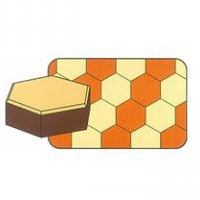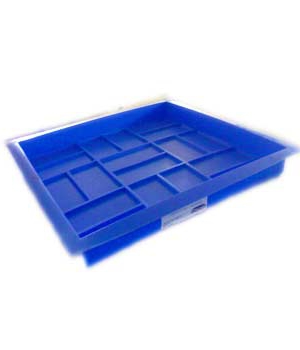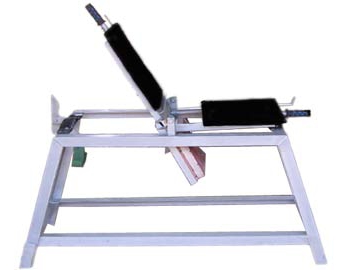Paving slabs are the most suitable material for paving sites, sidewalks and paths on the site of a country cottage or a private house. Equipment for the production of tiles can be made at home.
Molds used for decorative concrete products are already available at an affordable price.

Features
The production technology of this building material makes it durable and wear-resistant, superior in performance to any other. Covering with paving slabs is not only very convenient for hiking, but also can become a real decoration of the territory.
Thanks to a wide selection of configurations of shapes, you can make styling with all kinds of patterns, where additional color gamut will be used. This coating is characterized by resistance to frost, which ensures a maximum service life.
Production
Equipment for the production of tiles allows you to get high-quality products. The manufacturing technology is quite simple and low-cost, but requires some knowledge of the production process, as well as the utmost attention. The composition of the tile includes the following components: fine-grained gravel; quartz sand; tap water; cement M500; special plasticizer for concrete.
Equipment for the production of tiles consists of the following elements: molding vibrating table; plastic molds for products; domestic concrete mixer; heating bath, in which the products will be removed from the molds.

Main process
The production of paving slabs involves five main stages of work: preparing molds for future products; preparation of a solution from a mixture of concrete; molding using a vibrating table; exposure of products a day; extraction of tiles from forms with subsequent storage.
If you are using new plastic molds for tile production, you can skip the first step. And when already used forms are involved in the process, it is necessary to clean them of the remnants of the mixture, and only then proceed to production.
The solution is prepared in a concrete mixer. Crushed stone, sifted sand, as well as cement, are poured there. The proportions should be 2: 1: 1.5, respectively. Dry ingredients must be thoroughly mixed within a few minutes.
In a bucket of water, add a plasticizer according to the manufacturer's formulation. Water is poured into the concrete mixer in portions, and each of them interferes for 10-15 minutes. The resulting solution should not be dry, but not liquid. Its consistency should resemble thick sour cream.
The molds must be installed on a vibrating press for the production of tiles, after which the resulting concrete solution is poured evenly into each. When the unit turns on, concrete will settle evenly in the molds. If necessary, add a solution. Vibrating concrete in molds takes 10-15 minutes. This will completely remove air bubbles from it, forming a monolithic structure.

Excerpt
When the molding process on the vibrating table is completed, it is necessary to carefully place the molds in a dry ventilated place strictly horizontally. You can use racks or wooden pallets for this. Concrete must set in forms, and this requires 24-36 hours, no less.And after the tile can be removed.
For this, baths are used in which water heaters are built. Forms should be in warm water for 5-10 minutes. The plastic from which they are made has a higher expansion coefficient compared to concrete, so a gap will form between the tile and the mold, into which water will quickly enter. And after that it will be possible to easily remove the tile.
Raw tiles should be placed on pallets outdoors. Now in the event of rain, concrete will only gain strength. The period of complete drying and curing is at least 28 days. And after that you can lay the tiles.

DIY tile manufacturing equipment
Before you understand the manufacture of a vibrating table, you need to decide on the principles that underlie its work. First of all, this device should create oscillations with a frequency that provides vibrocompression of concrete in the mold.
For these purposes, a metal worktop is suitable, which is connected by springs to the supporting frame. From below, a pulley for belt transmission with a couple of weights is attached to the tabletop itself. They will create vibrations during rotation.
So, if we consider the press for the production of tiles, it must be said that the electric motor in this case is mounted on a support frame made of a metal corner. When everything is fixed, it is necessary to connect the eccentric pulley and the engine with a belt. After all these rather complicated manipulations, the equipment will be completely ready for use.
Alternative
Machines for the production of tiles are quite compact, and therefore it is quite possible to work on them at home. The usual eight-hour shift allows you to produce 8-10 square meters of products.

It is worth saying about such an important point as styling. Now there is a special machine for these purposes, which does not fit one element at a time, but with whole square meters at once. This greatly speeds up the process.
